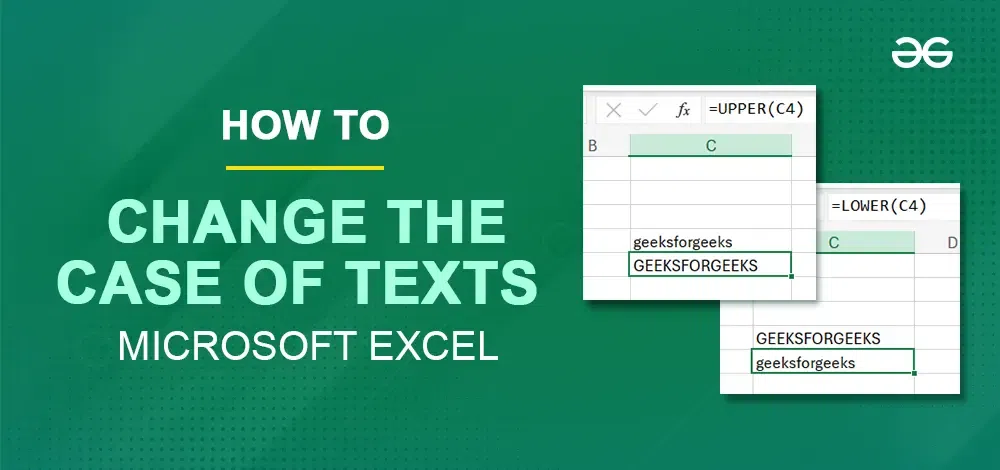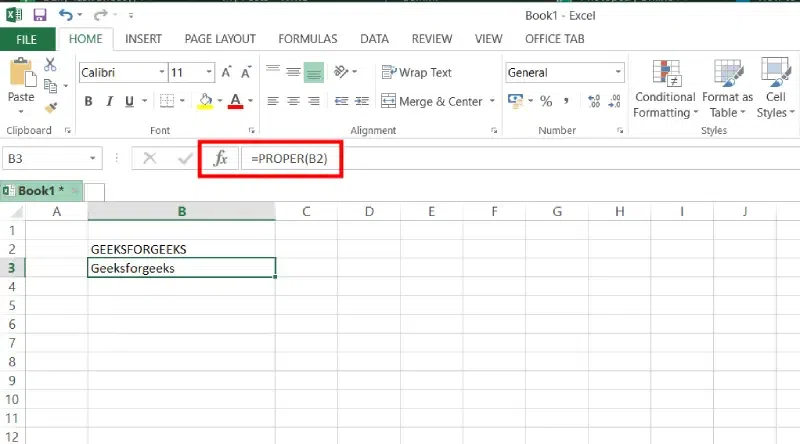
|
|
Changing the case of text in Microsoft Excel is a powerful yet often overlooked feature that can help you standardize your data and improve readability. Whether you need to convert text to uppercase, lowercase, or capitalize each word, mastering this skill can significantly enhance your data presentation and consistency. In this article, you will learn the easy steps to change the case of texts in Microsoft Excel. With a few simple techniques, you’ll be able to transform your data effortlessly. Let’s explore how to efficiently change the case of text in Excel and take your data management skills to the next level!  Change the Case of Texts in Microsoft Excel Different Ways to Change the Text in Microsoft Excel
Excel Functions for Changing Text CasesThere are many built in functions in excel which can be used to change the case of text. These functions are powerful tools for standardizing and formatting text within your spreadsheets. Here are the primary functions for changing text cases in Excel.
How to Change the Text Case Using Formulas in ExcelFormulas in Excel are like magic spells that help transform your data effortlessly. Let’s explore three handy ones for changing text cases: UPPER(), LOWER(), and PROPER() functions. UPPER() FunctionThis function takes any text you give it and converts it to all uppercase letters. For example, if you have the text “horje” in a cell, =UPPER(Cell number) will turn it into “GEEKSFORGEEKS”. How to Use UPPER() Function in ExcelStep 1: Enter text into the sheet Step 2: Click on the cell where you want the result Step 3: Write the Function
Step 4: Preview Result  Upper Function in Excel LOWER() FunctionConversely, LOWER() does the opposite. It converts text to all lowercase letters. So, “GEEKSFORGEEKS” becomes “horje” with =LOWER(Cell Number). How to Use the Lower() Function in ExcelStep 1: Enter the data into the Sheet Step 2: Select the Cell where you wants the result Step 3: Use Formula
Step 4: Preview Result  Lower Function in Excel PROPER() FunctionNow, PROPER() is a bit more sophisticated. It capitalizes the first letter of each word in your text. For instance, if you input “GEEKSFORGEEKS” into a cell, =PROPER(Cell number) will give you “Geeksforgeeks”. How to Use Proper Function in ExcelStep 1: Enter the Data into the sheet Step 2: Select the cell where you want the result Step 3: Use Function
Step 4: Preview Results  Proper function in MS Excel How to Convert Text case with VBA MacroVBA, or Visual Basic for Applications, is like the behind-the-scenes wizardry of Excel. It lets you write custom programs, called macros, to automate tasks, including text manipulation. What is VBA(Visual Basic for Applications)?VBA is a programming language built into Excel that allows you to create customized solutions for specific tasks. It’s like giving Excel superpowers! How to Write a VBA Macro for Text Case ConversionYou don’t need to be a coding expert, don’t worry. Writing a simple VBA macro for changing text cases is quite straightforward. You essentially tell Excel what you want it to do with your text. Creating and Running a Simple VBA Macro
Flexibility and PowerThe beauty of VBA is its flexibility and power. You can create macros to handle complex text formatting tasks, customize them to suit your exact needs, and even integrate them with other Excel functions and features. Change Case:
Replace Text:
Drawbacks and Complexities
But if you’re willing to invest a little time to learn, VBA opens up a world of possibilities for automating tasks in Excel, including text case conversion. And once you have your macro set up, you can reuse it over and over again, saving you time and effort in the long run. ConclusionIn conclusion, mastering text case formatting in Excel is key to maintaining consistency and readability in your spreadsheets. Whether you’re dealing with large datasets or crafting detailed reports, ensuring that your text is properly formatted can greatly enhance the professionalism and clarity of your documents. FAQs – Ways to Change the Case of Texts in MS Excel
|
Reffered: https://www.geeksforgeeks.org
| Excel |
| Related |
|---|
| |
| |
| |
| |
| |
Type: | Geek |
Category: | Coding |
Sub Category: | Tutorial |
Uploaded by: | Admin |
Views: | 18 |